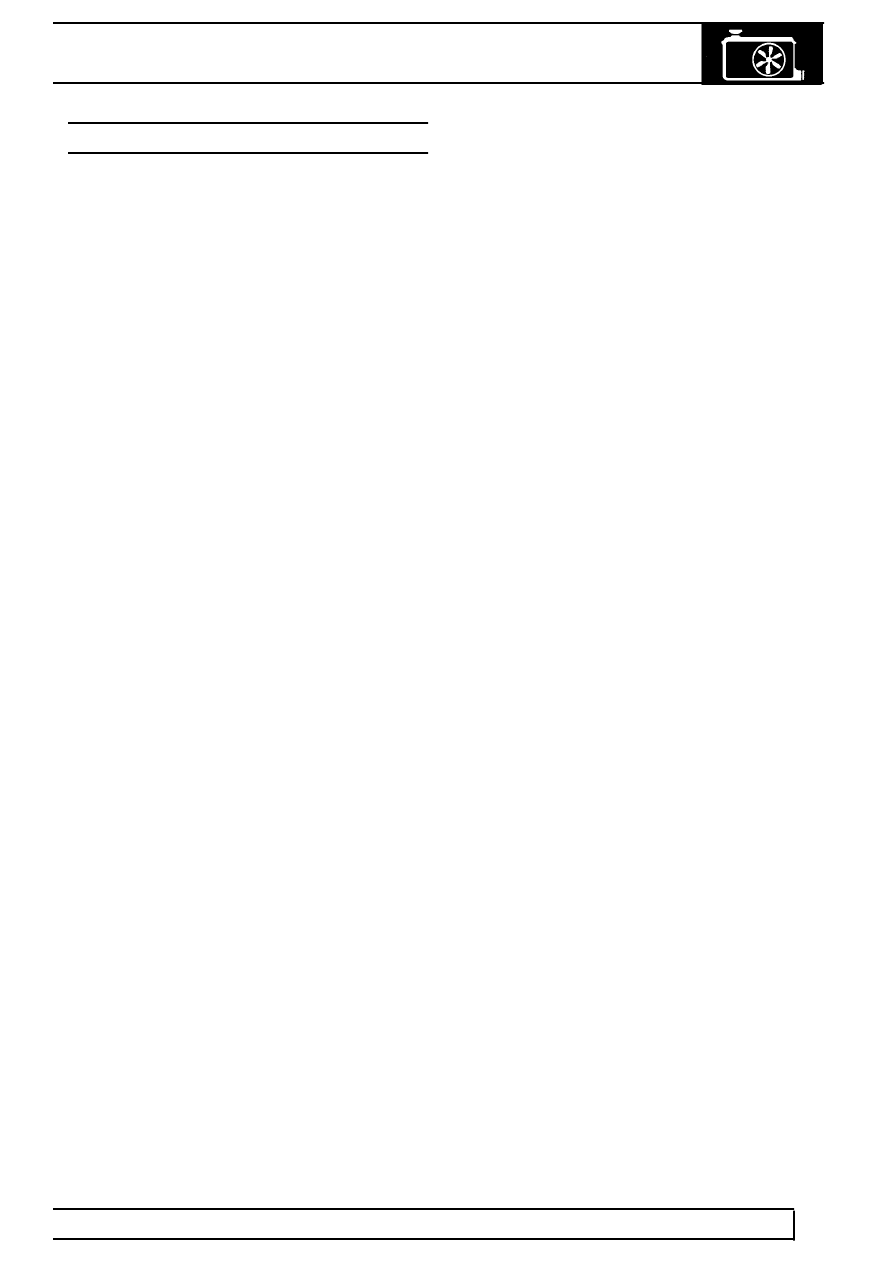TD5 Defender

COOLING SYSTEM
11
DESCRIPTION AND OPERATION
OPERATION
Coolant Flow - Engine Warm Up
During warm up the coolant pump moves fluid through the cylinder block and it emerges from the outlet housing.
From the outlet housing, the warm coolant flow is prevented from flowing through the upper and lower radiators
because both thermostats are closed. The coolant is directed into the heater circuit.
Some coolant from the by-pass pipe can pass through small sensing holes in the flow valve. The warm coolant
enters a tube in the thermostat housing and surrounds 90% of the thermostat sensitive area. Cold coolant
returning from the radiator bottom hose conducts through 10% of the thermostat sensitive area. In cold ambient
temperatures the engine temperature can be raised by up to 10
°
C (50
°
F) to compensate for the heat loss of the
10% exposure to the cold coolant return from the radiator bottom hose.
At engine speeds below 1500 rev/min, the by-pass valve is closed only allowing the small flow through the sensing
holes. As the engine speed increases above 1500 rev/min, the greater flow and pressure from pump overcomes
the light spring and opens the by-pass flow valve. The flow valve opens to meet the engine’s cooling needs at
higher engine speeds and prevents excess pressure in the cooling system. With both thermostats closed,
maximum flow is directed through the heater circuit.
The heater matrix acts as a heat exchanger reducing the coolant temperature as it passes through the matrix.
Coolant emerges from the heater matrix and flows to the fuel cooler ’T’ connection via the heater return hose.
From the fuel cooler the coolant is directed into the coolant pump feed pipe and recirculated around the heater
circuit. In this condition the cooling system is operating at maximum heater performance.
Coolant Flow - Engine Hot
As the coolant temperature increases the main thermostat opens. This allows some coolant from the outlet
housing to flow through the top hose and into the radiator to be cooled. The hot coolant flows from the left tank in
the radiator, along the tubes to the right tank. The air flowing through the fins between the tubes cools the coolant
as it passes through the radiator.
A controlled flow of the lower temperature coolant is drawn by the pump and blended with hot coolant from the
by-pass and the heater return pipes in the pump feed pipe. The pump then passes this coolant, via the cylinder
block, to the oil cooler housing, cooling the engine oil before entering the block to cool the cylinders.
When the fuel temperature increases, the heat from the fuel conducts through the fuel cooler ’T’ connection and
causes the fuel thermostat to open. Coolant from the cylinder block flows through the oil cooler and via a pipe and
hose enters the lower radiator. The lower temperature coolant from the oil cooler housing is subjected to an
additional two passes through the lower radiator to further reduce the coolant temperature. From the lower radiator
the coolant flows , via a hose, to the fuel cooler.
As the hot fuel cools, travelling slowly forwards through the cooler, it meets the progressively colder coolant
travelling in the opposite direction from the lower radiator.
